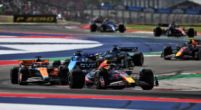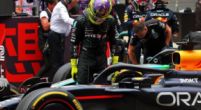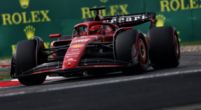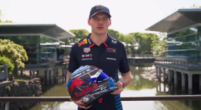General

Forthcoming vote on new regulations involves much more than budgetcap
The World Motor Sport Council, the body in which the FIA, together with the teams and the owners (Liberty Media) of Formula 1, make decisions about the future of the sport, will vote on Wednesday afternoon on a whole series of regulations that should make the sport fairer and more attractive in the coming years. The budgetcap is only a start.
There's no real tension around this mood anymore, because the teams already did it last week. That was the result of a long period of negotiation, during which there was a lot of talk about the budget ceiling. In the end, the teams agreed that a gradual reduction of that limit was the best option.
Gradual reduction of the budget cap
The original amount of $175 million will be reduced to $145 million by 2021, after which $5 million will be waived in the following two years. If the limit is 135 million, a possible further reduction will be negotiated in 2024. All these amounts will be known to the regular followers by now.
However, a number of other measures have been agreed that should make the sport fairer and cheaper in the long term. Although less attention has been paid to this, the impact may be greater than the budget cap and will be more visible to the fans.
The aerodynamic 'handicap'
As of 2021 a 'handicap' for aerodynamic development will also be introduced. This means that the aerodynamic development in the wind tunnel or on the computer (CFD) will depend on their position in the constructors' championship.
The season will be split into two halves. Until June the 30th the championship standings of the previous year will be used, while after 30th of June the championship standings of the first half of the season will be decisive. This 'handicap' will also be introduced gradually.
For 2021, the 2020 manufacturer's champion will be allowed to carry out 90 percent of a still to be determined amount of aerodynamic development, while the number ten in the championship will get 112.5 percent. With the position of 2019 Williams would thus get almost a quarter more development space than Mercedes and from 2022 that difference will even be increased to 64 per cent.
'Open source' parts and frozen engines
In addition, more and more parts will be standardized. These are mainly subcutaneous and are distributed to the teams via an 'open source' principle. The FIA will therefore not appoint a third party to produce a part, but teams will have to make their own designs available. In this way, standardisation remains somewhat non-committal.
Finally, the development of the engines will be brought to a slow standstill, with the intention of freezing them completely from 2023 onwards. It is hoped that this will mimic the situation before the hybrid engines, when all engines delivered approximately the same power. The question of whether the engines will be able to compete with each other at the time of freezing will be crucial in this respect.



















































